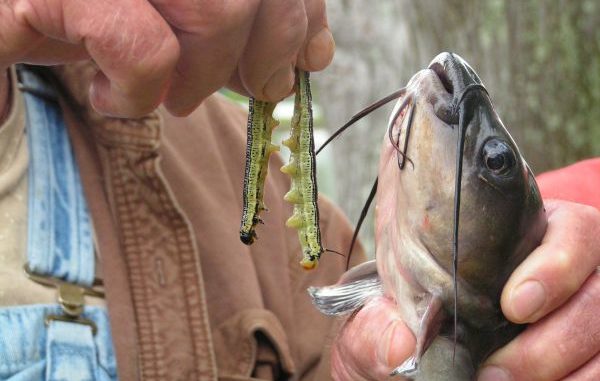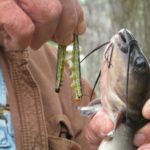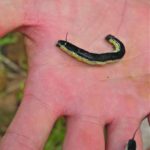
If you’re looking for a natural bait catfish and bream just can’t ignore, look no farther than the nearest catalpa tree. Here’s how to use pungent catalpa worms to load the boat.
Living on the shores of Lake D’Arbonne has many advantages for Ron Manning.
After growing up in the area, he spent 30 years traveling the world as a member of our armed services. But when he returned to Northeast Louisiana with his wife Carrie and moved to lake property left him by his father, it was a dream come true.
As far as fishing goes, life also got better for the couple when they discovered the first crop of catalpa worms on trees his dad had planted 25 to 30 years ago.
Between the catalpa worms and the lure of fishing on the lake, it was also enough to bring Manning’s brother Sonny to visit several months each year.
“I was first introduced to catalpa worm fishing back in the 1960s, so it’s just part of my way of fishing now,” Ron Manning said. “I’ve always loved fishing for catfish with catalpa worms, and they are a great bait for catching bream, too.
“When we first moved back, the area had been hit hard by drought, and the trees were struggling. We fertilized them, watered them and now they are rewarding us with plenty of catalpa worms each year to fish with.”
Catalpa worms don’t come your way without a fight, though. In fact, the cantankerous little critters are the only fish bait that spits on you as you pick them up or put them on your hook.
And it’s a little fluorescent-green ooze that gets on your fingers that must have been used as the prototype for Sharpie permanent markers.
It doesn’t come off easily.
The worms are also tough and, when mature, you need to cut them into smaller pieces — especially for bream fishing. That adds another type of dark-brown ooze and a pungent scent to your fishing fingers.
And, if you look closely at them, the worms are a bit frightening, with their little black horns and grabby little feet.
“That’s just part of it,” Sonny Manning said. “The very thing that is unattractive to us is what makes them such great fish baits.
“The smell is probably what really attracts bream and catfish; they have a real pungent odor, and the little ooze they give off is attracting to the fish. It’s just a good, natural fish bait.”
Sonny Manning said you don’t have to grab a worm to get a whiff of the attractant, either: If you roll up a leaf off a catalpa tree, squeeze it and then smell it, you get that same odor.
While some people like to use the smaller worms, both for convenience and because the size is more like other fish baits, Ron Manning likes mature catalpas.
“They are so big that we do have to cut them in three or four pieces, but the skin is also tougher and that lets you catch more than one fish on each piece, especially bream,” he explained.
Ron Manning also pointed out that, to get the most bang out of your catalpa, you always want to put the hook through the skin at least once. That keeps the fish from totally robbing your bait like when you fish with red worms or crickets.
Catalpa worms are best used fresh, but it is fairly easy to freeze them in saltwater and take them out when you need them.
Sonny Manning likes to use the worms on a pole or mini-cast for catfish, but he also uses them on trotlines.
For trotline applications he has an important piece of advice.
“When fishing with catalpas for catfish on trotlines, always bait them after dark or the bream will eat all your bait off the lines before the catfish have a chance,” Sonny Manning said. “I learned that the hard way.”
Catalpa worms usually start appearing around April or May in Louisiana, depending on where you live. Good trees usually make three or four crops a year, with the worms coming out around the end of September in their last appearance of the year.
Ron and Sonny Manning agreed that fishing would not be the same without catalpa worms.
They do differ a bit on their favorites, though. Ron Manning quickly said catfish are his favorite species to catch with the worms. His brother agreed. Well, kind of.
“Look, there is nothing like getting on a bream bed and catching one right after the other,” Sonny Manning said. “I’m talking about the kind of trip where when you try to go to sleep that night all you see in your mind is that bobber going down.
“If you bream fish a lot, you know what I mean.”
While bream and catfish are the primary targets when fishing with catalpa worms, crappie also like the worms. But a fresh crop of worms usually isn’t out until after the crappie have spawned and moved to deeper water, where most fishermen stick with minnows and jigs.
If you don’t keep a close eye on catalpa trees, you could miss the worms’ migration from the ground to the leaves and then back to the earth. Sometimes it only takes a matter of a few days for the worms to emerge, eat the leaves off a tree and disappear.
But they won’t last long when you find them either — especially if you put them in your bait can and use them at the end of a fishing hook.



